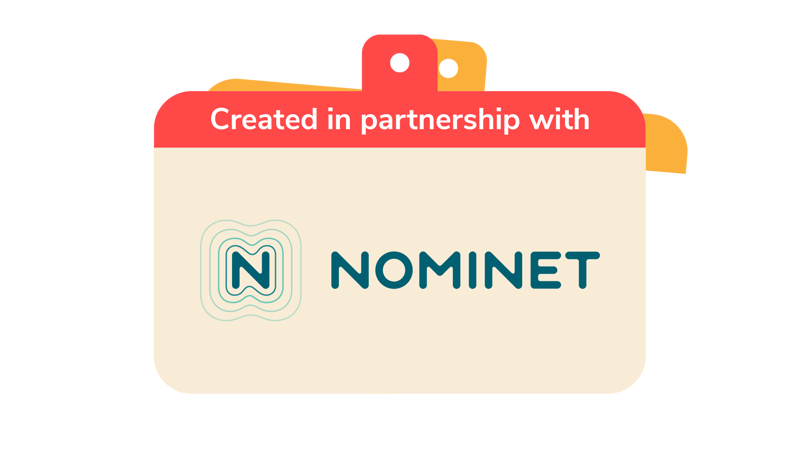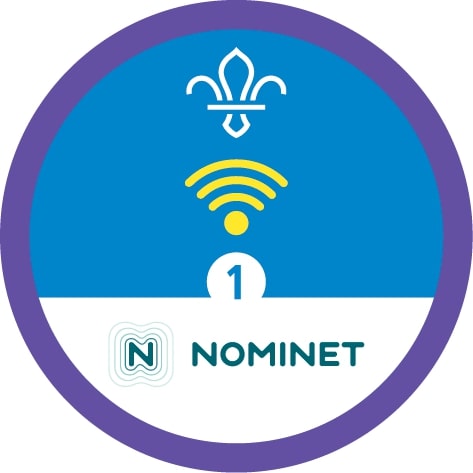
Spot the sponsored content
You’ll need
- Pens or pencils
- Scrap paper
Before you begin
- Use the safety checklist to help you plan and risk assess your activity. Additional help to carry out your risk assessment, including examples can be found here. Don’t forget to make sure all young people and adults involved in the activity know how to take part safely.
- Make sure you’ll have enough adult helpers. You may need some parents and carers to help if you’re short on helpers.
Talk about targeted advertising
- Explain that in this activity, everyone will guess the famous person (or fictional character) their partner’s thinking of, based on a profile made up of their online activity. Afterwards, they’ll work together to create an advert targeted to the profile.
- Ask if anyone knows what targeted advertising is. Explain that a lot of online adverts are shown to people based on both their online activity and their identity, such as their gender, age, location or ethnicity.
For example, some advertisers could choose to show their adverts to men over the age of 35. Others could choose to show their adverts to people interested in action films or bikes.
- Ask if anyone has seen or noticed targeted adverts before. If they have, what have they seen and where have they seen them?
It could be on social media sites, online games, mobile apps, or other web pages. They may have seen adverts for different products, companies, or games.
- Explain that lots of websites collect personal data and build up a profile of people’s online activity that can be used to target adverts to them.
Build your profiles
- Everyone should get into pairs. Everyone should get a pen and some scrap paper to make notes.
- Each person should choose a character or famous person to play in the game. They shouldn’t tell anyone else who they’re thinking of. They should make sure they keep it a secret from their partner.
It’s a good idea to prepare some examples you can give to people if they can’t think of one themselves – you could use celebrities, such as Chief Scout Bear Grylls, or well-known fictional characters from TV shows or films, such as Harry Potter.
- When everyone’s thought of a character, the person leading the activity should ask a series of questions.
We’ve added some ideas below to get you started.
- Everyone should take it in turns to answer in character. They should note down how their partner answers, so they can start building a profile of their partner’s character.
Keep it quick – you could set a 30-second timer for each question to keep it moving.
- After a few questions, everyone should use the notes and information they’ve collected to try to work out who their partner’s character is.
- Continue to ask questions until everyone’s managed to work out their partner’s character.
If anyone is struggling, you could let them ask their own questions in their pairs or prompt people to give their partner a clue.
- Once everyone’s completed their profiles and worked out who the characters are, they should think about the different bits of information they learned about each other. Was it easy or difficult to figure out who people had chosen?
- Everyone should chat about the different questions they were asked. Which bits of information do they think that websites could find out about them while they’re online? How might they find that information?
- Everyone should talk about how they feel about companies knowing this information about them. Does knowing things like their location, gender or age give an accurate picture of who they really are? Everyone should take it in turns to share some of their thoughts with the group.
Adverts can target you based on things like race, gender, age, or job; they can also be based on things like your values, personality, attitude or interests. We’ve added some ideas of questions to ask below. Remember to include some real themes as well as some fun questions too.
- You’ve signed up to a new social media site and it’s asked for your gender. What do you put?
- The new site’s also asked for your age. How old are you?
- You’ve been tagging lots of photos on social media and searching for places in your local area. Where do you live?
- You’ve updated your social media profiles. What’s your job?
- You’ve been liking pages to do with religions. Do you follow any religions?
- You’ve been searching for something to keep you busy during the weekend and buying things online. What do you like doing in your spare time?
- You’ve been blocking certain adverts from showing up on your feed. Is there anything you really don’t like?
- You’ve been searching for (and liking) recipes. What’s your favourite food?
- You’ve been searching for and downloading some new tunes. What kind of music do you like?
Create your ads
- Each pair should choose one of the profiles from the first part of the activity.
- Each pair should work together to create some personalised adverts for the person they profiled.
- When everyone’s made a few adverts, pairs should take it in turns to present their ads to the rest of the group. They should explain how they built information into the targeted advert.
- After people have presented their ad, the rest of the group should try to guess who the character is.
- Everyone should finish the session by chatting about the pros and cons of targeted adverts.
Reflection
Everyone should think about whether personalised adverts are a good or bad thing. Do they think it’s a bonus that they only see ads for things they’re interested in? Why might it be not so good? If targeted adverts were banned, people might see fewer adverts for things they like, but they might also see some things they wouldn’t have before (for example, jobs or other opportunities). Sometimes targeted advertising can discriminate against groups of people unintentionally, for example, if job or housing ads are shown on the basis of gender or ethnicity. If there were no targeted ads, there would probably be less content and people might have to pay for some social media sites as companies like Google and Facebook (including sites like Instagram and YouTube) can make up to 90% of their revenue from selling adverts.
Do people know that lots of websites give the option to opt out of personalised ads? Would they rather opt out or keep seeing targeted adverts? Do they think that websites can be trusted to only capture the information that they need? Anyone who’s comfortable could share their thoughts with the group. Maybe everyone is happy seeing personalised ads, but a lot of people aren’t aware of the data that’s collected to make that happen. Targeted advertising is a really complicated issue – it’s about making sure that everyone’s aware that it happens so they can make their own informed choices.
Safety
All activities must be safely managed. You must complete a thorough risk assessment and take appropriate steps to reduce risk. Use the safety checklist to help you plan and risk assess your activity. Always get approval for the activity, and have suitable supervision and an InTouch process.
- Online safety
Supervise young people when they’re online and give them advice about staying safe. Take a look at our online safety or bullying guidance. The NSPCC offers more advice and guidance, too. If you want to know more about specific social networks and games, Childnet has information and safety tips for apps. You can also report anything that’s worried you online to the Child Exploitation and Online Protection Command. As always, if you’ve got concerns about a young person’s welfare, including their online experiences, follow the Yellow Card to make a report.
- You could make the first part of the activity easier by giving everyone some pre-prepared characters, or they could simply answer the questions based on their own views and opinions.
- For an extra challenge, ask the pairs to think of a fun way to share what they’ve learned with others – maybe they could create a short game to play next time you meet.
Choose a method for presenting your adverts that suits everyone. If some people don’t want to present in front of the larger group, you could work in smaller groups instead.
All Scout activities should be inclusive and accessible.
Check out On the rights track to learn more about different community standards on social media sites and work towards your Digital Citizen Staged Activity Badge.
